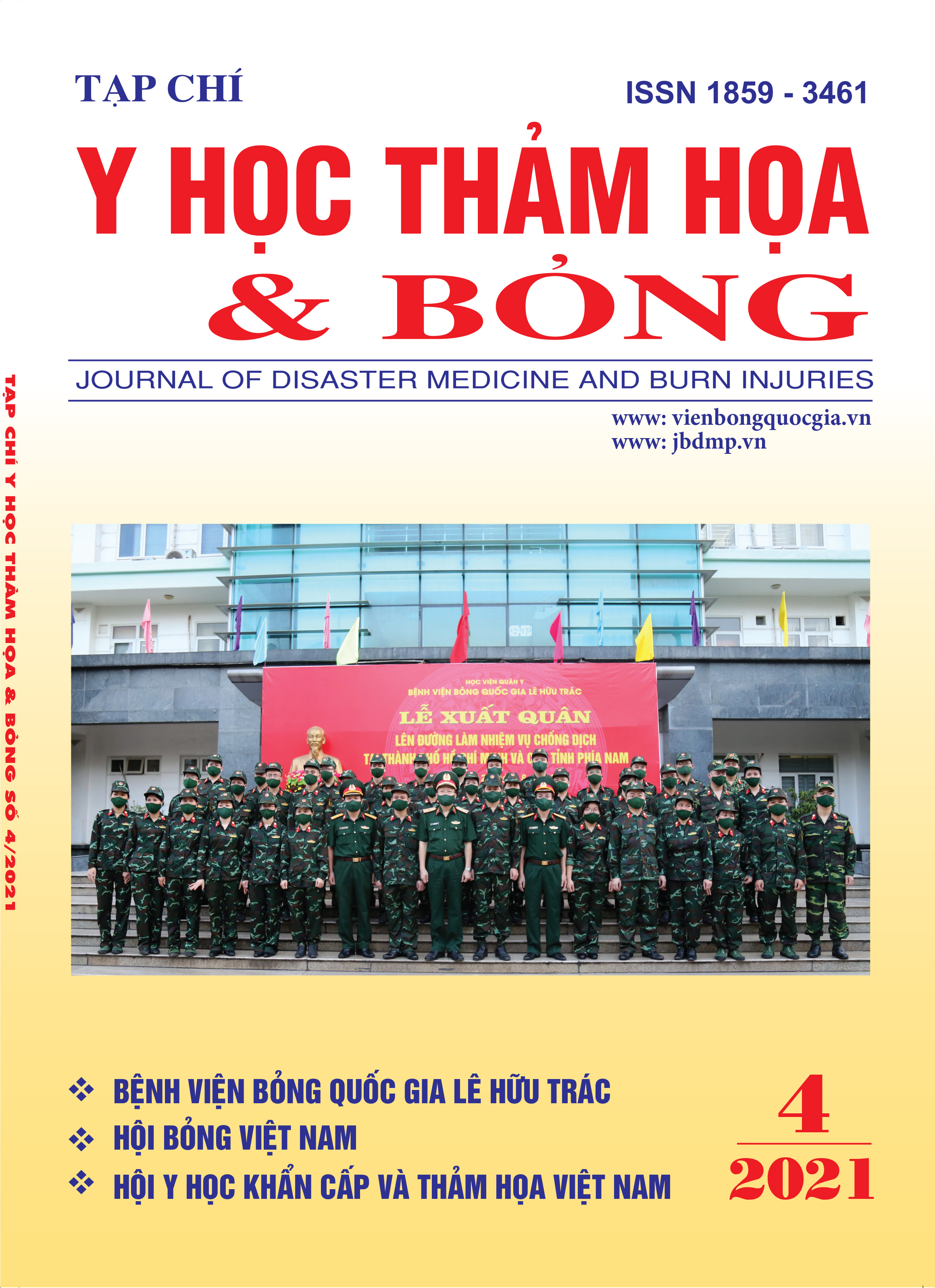Efficacy assessment of lymphatic-venous anastomosis methods on extremity lymphedema.
Main Article Content
Abstract
Introduction: Lymphedema is a dysfunction of the lymphatic system, obstructing interstitial fluid containing high-molecular-weight proteins. Treatment aims to drain lymphatic fluid into the circulation. In these procedures, lymphatic-venous anastomosis is the best choice for the management of this disease.
Materials and methods: 20 patients were diagnosed with lymphedema of the extremities based on clinical examination and nuclear magnetic resonance imaging features, the stage of lymphedema was determined and classified by the International Society of Lymphology in 2010, the size of the swollen limb was measured in 3 positions.
Patients were performed to connect lymphatics vessels and veins by super microsurgery technique, the number of lymphatic vessels, the diameter of the lymph vessels, the number of lymphatic-venous anastomosis, the type of anastomosis were statistically. Evaluation of outcomes based on the change in the size of the edematous extremities (Warren index), the change of clinical signs, the recovery of limb function.
Results: The average age of the disease for women is 58.18 ± 1.06, for men is 32.5, most of the patients are admitted in stage II, III of the disease.
The size of the edematous limb is on average 5 - 7cm larger than the healthy limb when measuring at different locations. The mean lymphatic diameter of the upper extremities was 0.67 ± 0.13mm, that of the lower extremities 0.56 ± 0.2 mm, the mean lymphatic diameter in extremities was 0.65 ± 0.11mm. Performing two to four lymph-venous anastomosis per patient, end-to-end and end-to-side anastomosis are commonly used in lymphatic- venous anastomosis. After surgery, the outcomes got good > 90% in all three measured sites over time (1 month, 3 months, 6 months), in the first week after surgery, the largest reduction in the size of the edematous extremities.
Conclusion: Lymphatic-venous anastomosis is an effective technique in the treatment of extremity lymphedema.
Article Details
Keywords
Extremity lymphedema, lymphatic-venous anastomosis, super microsurgery technique
References
2. International Society of Lymphology (2010), The diagnosis and treatment of peripheral lymphedema: 2010 consensus document of the international society of lymphology. Lymphology, 53: p. 3-19
3. Anne G. Warren, B., et al. (2007), Lymphedema a comprehensive review. Annals of Plastic Surgery, 59(4): p. 464-472.
4. Becker C., Assouad J., Riquet M.. et al (2006) Postmastectomy lymphedema: long-term results following microsurgical lymph node transplantation. Annals of surgery.243 (3): 313.
5. Yamamoto, T., et al. (2013), Upper extremity lymphedema index: a simple method for severity evaluation of upper extremity lymphedema. Ann Plast Surg, 70(1): p. 47-9
6. Hidding J.T., et al. (2014), Treatment-related impairments in arm and shoulder in patients with breast cancer: a systematic review. PLoS One, 9(5) : p. E96478
7. Koshima, I., et al. (1996), Ultrastructural observations of lymphatic vessels in lymphedema in human extremities. Plast Reconstr Surg, 97(2): p.397-405; discussion 406-7
8. Chang D. W., Dayan J., Greene A. K.. et al (2021) Surgical treatment of lymphedema: A systematic review and meta-analysis of controlled trials. Results of a consensus conference. Plastic and reconstructive surgery. 10.1097.
9. Furukawa H., Osawa M., Saito A.. et al (2011) Microsurgical lymphatic venous implantation targeting dermal lymphatic backflow using indocyanine green fluorescence lymphography in the treatment of postmastectomy lymphedema. Plastic and reconstructive surgery.127 (5): 1804-1811.
10. Dean, S. M. et al (2020). The clinical characteristics of lower extremity lymphedema in 440 patients. Journal of Vascular Surgery: Venous and Lymphatic Disorders, 8(5), 851-859.


